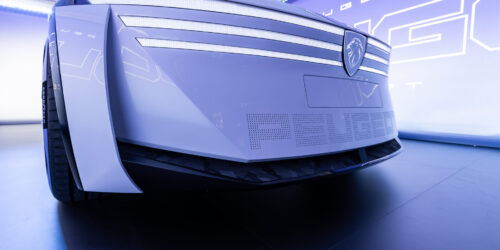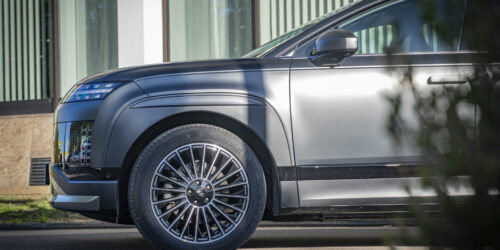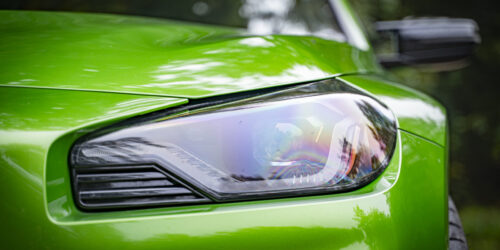The name already says it all: the Multistrada has always been one of the most versatile motorcycles. The 2025 Ducati Multistrada V2 S comes in an entirely new guise.
It starts with the bodywork, now featuring a redesigned side fairing air intake. This is intended to evacuate engine heat more effectively, improving riding comfort. The seat is also narrower, with a more relaxed knee angle, which naturally reduces fatigue on long journeys. There’s also a revised windscreen that can be adjusted in height by 8 cm manually, even while riding. The new 5-inch TFT display is easy to read, and the redesigned controls make it easier to choose among the five riding modes: Wet, Enduro, Urban, Touring, and Sport. There’s an 8-level adjustable traction control system, along with various settings for cornering ABS, wheelie control, and engine brake control, all of which can be combined.
As for the chassis, the 2025 version’s frame is made of aluminum, with the engine serving as a stressed member, and at the rear you can clearly see the bolted steel trellis frame. The rear swingarm is also new. According to Ducati, 18 kg have been saved compared to the previous model. For suspension, it features Marzocchi’s semi-active Skyhook system, adjustable in 4 stages and continuously adapting to riding conditions. Brakes at the front are twin 320 mm discs with two Brembo 4-piston calipers, while the rear has a 265 mm disc.
The biggest change to the Multistrada is the engine, which is 6 kg lighter. This is an entirely new V-twin design — and, as is traditional for Ducati, set at 90 degrees. The desmodromic valve actuation has been replaced with a variable intake valve timing system. Displacement is 890 cc, with 116 hp at 10,750 rpm. The short-stroke engine produces 92 Nm of torque at a relatively high 8,250 rpm, but interestingly, up to 70% of that torque is already available at just 3,000 rpm. The gearbox now shifts precisely, and the 2.0 quickshifter works flawlessly in both upshifts and downshifts.
So, how does the new Ducati Multistrada ride?
Handling is straightforward, and the bike inspires confidence from the very first kilometer. Ergonomically, the Italian machine impresses with a very comfortable riding position; the seat feels pleasant and offers enough freedom of movement, which is a plus on longer rides. The handling is typical Ducati: even during sporty cornering, the bike remains stable without sacrificing agility or comfort. Bologna’s engineers have nailed this combination. The wide handlebars make it easy to tip the bike into lean without effort, aided by the 3 kg lighter wheels. The brakes are easy to modulate and up to any task. The engine feels very smooth; thanks to increased rotating mass, its running has been refined. There’s no unpleasant driveline lash when opening the throttle at low revs, and the engine accelerates the Multistrada progressively across the entire rev range. Our test bike averaged 6 l/100 km in fuel consumption.
What are the drawbacks of the 2025 Multistrada?
We were less impressed by the fit and finish of the body’s plastic parts. For a motorcycle priced at €18,500 without options, more could be expected in this area.
In conclusion, the Multistrada V2 S is undoubtedly a well-executed motorcycle. It is very approachable, with no unpleasant surprises from the engine or chassis while riding. Importantly, it hasn’t lost its sporty DNA, yet remains very comfortable for long-distance touring.
Technical specifications & Pros / Cons
-
- Engine type: 90° liquid-cooled V-twin, 4-stroke
- Power: 115.6 hp at 10,500 rpm
- Torque: 92.1 Nm at 8,250 rpm
- Emissions standard: Euro 5+
- CO₂ emissions (combined): 127 g/km
- Consumption (WMTC): 5.5 l/100 km
- Transmission: 6-speed gearbox (up & down quickshifter)
- Weight: 202 kg
- Seat height: 830/850 cm [sic]
- Fuel tank capacity: 19 l
+ Ergonomics / comfort
+ Sport-touring balance
+ Smooth engine character
+ Weight reduction
– Plastic parts finish


